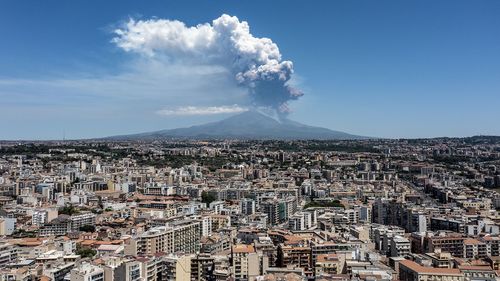Video footage shared on social media depicts crowds of people hastily moving away from the volcanic activity on Monday, with one tour company reporting having 40 individuals on the volcano at the time of the eruption.
Giuseppe Panfallo, a guide with Go Etna, filmed his tour group huddled together with an enormous ash cloud in the distance.
“We had a close call, just look at this massive cloud. We were extremely close, and thankfully our guide was responsible,” a person can be heard saying in the video shared with CNN.
“It arrived all at once, an immense smoke, immense, immense roar.”
There are approximately twelve tour operators operating on Mount Etna at any given moment, as confirmed by the Sicilian Civil Protection Agency, which is currently in the process of contacting each one to verify their safety and well-being.
The volcano on the Italian island is a popular tourist destination visited by 1.5 million people a year, many of whom trek almost all the way to its summit.
Although Mount Etna is one of the world’s most active volcanos, there hasn’t been an eruption of this magnitude since 2014, according to the National Institute of Geophysics and Volcanology Observatory.
These eruptions often stop as quickly as they start, the observatory added, though explosions were still increasing in intensity and the mountain is spewing out a very small amount of lava and fire.

Authorities have closed many of the roads heading up to the volcano to prevent people trying to get close to the eruption and from getting in the way of first responders and emergency vehicles, Tarantino added.
About 1pm local time (9pm AEST), the volcano started spewing hot lava, which is more in line with previous eruptions, an observatory spokesman said.
The observatory defined the volcanic activity as a pyroclastic eruption, resulting in a “significant increase in volcanic tremor and the formation of an eruptive column containing a lethal mixture of high-temperature gases, lava grains, volcanic ash, and rock fragments of various sizes that rapidly descends down the slopes of the volcano”.








